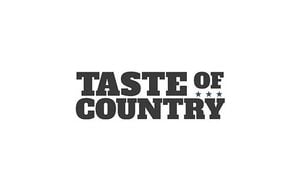Doctors across Canada are raising the alarm about the resurgence of scurvy, a condition long thought to be of historical interest, mainly seen among sailors centuries ago. Recent case reports indicate this debilitating disease, caused by a severe deficiency of vitamin C, is making its way back, particularly among vulnerable populations facing food insecurity.
The Canadian Medical Association Journal (CMAJ) featured the case of a 65-year-old woman diagnosed with scurvy at a Toronto hospital last year. The study highlights the pressing need for healthcare professionals to be vigilant for nutritional deficiencies, particularly among patients who may be at higher risk, such as those with low socioeconomic status and older adults living alone.
Dr. Sally Engelhart, the study's lead author and an internal medicine specialist at Mount Sinai Hospital, emphasized, "If you're not thinking about scurvy, then there's no way you're going to be able to diagnose it." This case shines light on how food insecurity can manifest through uncommon medical diagnoses, linking economic hardship with health complications.
Scurvy is induced by insufficient intake of vitamin C, also known as ascorbic acid, which is typically abundant in citrus fruits like oranges and lemons and leafy greens such as spinach and broccoli. Scurvy's symptoms can show up within just eight to twelve weeks of inadequate vitamin C intake and may include fatigue, large patches of bruising, bleeding gums, and significant internal issues if left untreated.
Remarkably, this isn't the first report of scurvy among modern patients. Historical data has shown regular incidents of vitamin C deficiency among adults, sparking concern among health advocates. Researchers at McMaster University noted 52 patients hospitalized between 2009 and 2017 had vitamin C levels low enough to result in scurvy, with 13 diagnosed with it.
Dr. Engelhart pointed to the complex reasons behind such diagnoses, citing the case of the Toronto woman. She had been socially isolated, lacked family support, and faced limited mobility. Her diet primarily consisted of non-perishable items like canned soup and processed cheese, devoid of fresh produce. According to the CMAJ report, the restricted diet stemmed from years of challenges with grocery shopping and meal preparation due to her health issues.
The 2022 Canadian Food Price Report showed alarming increases in food prices, directly linked to the rise of food insecurity. The report revealed 16.9% of Canadians faced moderate or severe food insecurity last year, up from 12.9% the previous year. This rise parallels similar trends elsewhere, such as the U.S., where children's cases of scurvy tripled from 2016 to 2020.
The evolution of scurvy cases raises fundamental questions about how food access and public health policies intersect. Health officials note the intertwined nature of poverty, dietary inadequacies, and chronic diseases. With rising prices, many individuals resort to cheaper, less nutritious food options, exacerbated by structural inequalities.
According to Dr. Andrew Boozary, a primary care physician at the University of Toronto, those facing food insecurity often experience heightened risks for numerous chronic conditions like cardiovascular diseases and mental health issues. He remarked, "There is a real continuum of serious health conditions exacerbated by food insecurity.”
Experts urge doctors to broaden their perspective when diagnosing patients with fatigue, bruising, or abnormal bleeding, especially those from impoverished backgrounds or isolated living situations. The condition of hypovitaminosis C should not be deemed merely archaic or irrelevant. Patients who promote poor dietary habits due to personal health conditions or social isolation symptoms deserve attention.
Encouragement is coming from multiple fronts. Many health advocates are using recent reports to press for revisiting food security policies. That includes examining governmental support systems for those needing nutritional assistance. Tackling food insecurity could fundamentally alleviate other consequential health issues, including scurvy.
While the Tokyo woman served as the focus of the recent CMAJ report, health care officials aim to address the broader patterns indicating this nutritional deficiency. The factors leading to these resurgence cases should catalyze discussions around socioeconomic policies and their ramifications on public health.
This year's case, coupled with research indicating vitamin C deficiency is not merely confined to history, provides new impetus to view nutrition as central to health care. Doctors are reminded to ask sensitive questions about dietary habits, food accessibility, and lifestyle choices during consultations to identify potential risk factors leading to conditions like scurvy.
Overall, the emergence of scurvy isn't just about the absence of vitamin C; it speaks to fundamental issues of accessibility, socioeconomic status, and public health awareness. Addressing food insecurity isn't merely about filling stomachs; it's about nurturing healthier communities less susceptible to the ailments brought on by inadequate nutrition.
With rising food prices, changing social structures, and shifting health priorities, the resurgence of scurvy might be viewed not just as unfortunate but as indicative of greater systemic failures. The specter of scurvy serves as both a warning and as motivation for health workers and policymakers alike to reassess their strategies and interventions for vulnerable populations.”



